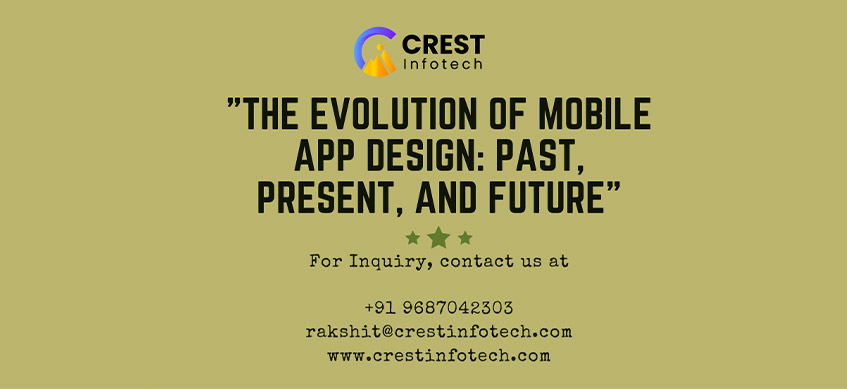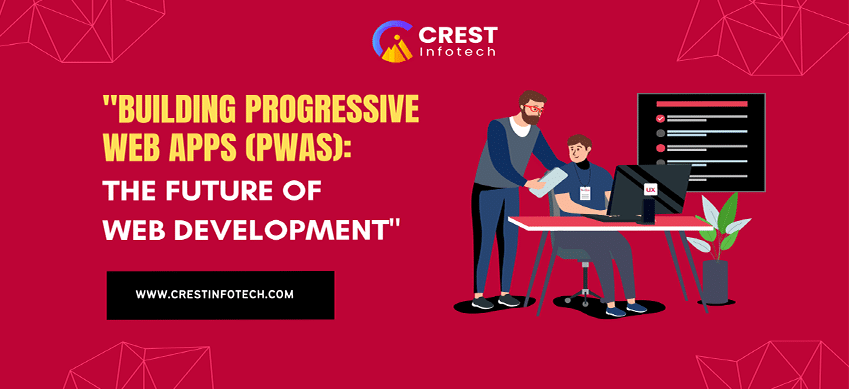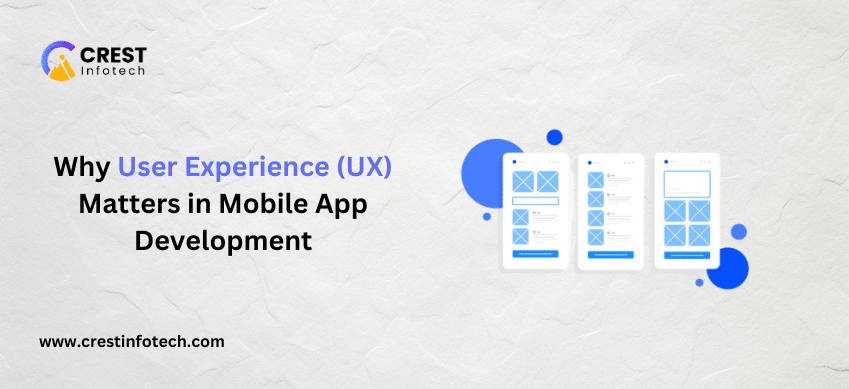Mobile app design has undergone a remarkable evolution since the advent of smartphones, shaping user experiences and transforming digital interactions. From early simplistic interfaces to today’s immersive, user-centric designs, the journey of mobile app design reflects technological advancements, user preferences, and evolving design principles. Here’s a comprehensive exploration of the past, present, and future trends in mobile app design:
1. Early Days of Mobile App Design (Past):
In the early 2000s, mobile app design was largely constrained by device limitations and simplistic user interfaces. Key characteristics included:
- Basic Functionality: Apps focused on core functionalities like calls, messaging, and basic utilities due to limited processing power and screen resolutions.
- Skeuomorphic Design: Emulated real-world textures and objects to provide visual familiarity, making interfaces intuitive but sometimes cluttered.
- Platform-Specific Designs: Different platforms (e.g., Symbian, BlackBerry, Windows Mobile) had distinct design guidelines and user interface paradigms.
2. Modern Era of Mobile App Design (Present):
With the rise of smartphones and advancements in technology, mobile app design has evolved significantly to prioritize usability, aesthetics, and seamless user experiences:
- Flat Design: Emerged as a response to skeuomorphism, emphasizing simplicity, minimalism, and clean interfaces. Popularized by Apple’s iOS 7 redesign and Google’s Material Design.
- Responsive and Adaptive Design: Designs that adapt seamlessly across various screen sizes, resolutions, and orientations to ensure consistency and usability on different devices.
- Gesture-Based Navigation: Intuitive gestures (e.g., swiping, tapping, pinching) replaced physical buttons, enhancing user interactions and fluid navigation within apps.
- Focus on User Experience (UX): Designing experiences that delight users with intuitive navigation, clear information architecture, and accessible interactions.
3. Current Trends and Innovations:
- Dark Mode: Offering alternative color schemes (light and dark modes) for improved readability and reduced eye strain, gaining popularity across platforms.
- Microinteractions: Small animations or visual cues that provide feedback, guide user actions, and enhance engagement (e.g., button animations, loading spinners).
- Personalization: Tailoring app experiences based on user preferences, behavior, location, and contextual data to create personalized user journeys.
- Augmented Reality (AR) and Virtual Reality (VR): Integrating immersive technologies to enhance user experiences in gaming, retail, education, and more.
4. Future Directions in Mobile App Design:
Looking ahead, the future of mobile app design promises exciting advancements driven by technological innovations and evolving user expectations:
- AI and Machine Learning: Leveraging AI to predict user behavior, automate personalization, and enhance user interfaces with intelligent features.
- Voice Interfaces: Integrating voice-powered interactions (e.g., Siri, Alexa) to offer hands-free control and accessibility within apps.
- Foldable and Wearable Devices: Designing adaptable interfaces for foldable phones and wearable devices, optimizing usability and user experiences across new form factors.
- Ethical Design: Prioritizing user privacy, data security, and ethical considerations in design practices, ensuring transparency and trustworthiness.
Conclusion:
The evolution of mobile app design reflects a transformative journey from basic functionalities to sophisticated, user-centric experiences. As technology continues to advance and user expectations evolve, designers must stay innovative, adaptable, and empathetic to user needs. By embracing emerging trends, leveraging advanced technologies, and focusing on seamless user experiences, mobile app design will continue to shape the future of digital interactions and redefine how users engage with technology.
By understanding the past influences, current trends, and future possibilities in mobile app design, designers and developers can navigate the dynamic landscape, create compelling experiences, and drive meaningful engagement in an increasingly mobile-centric world.
This article provides an insightful overview of the evolution of mobile app design, highlighting key milestones, current trends, and future directions shaping the industry. Adjust content based on specific design practices, technological advancements, and emerging user preferences in mobile app development.



